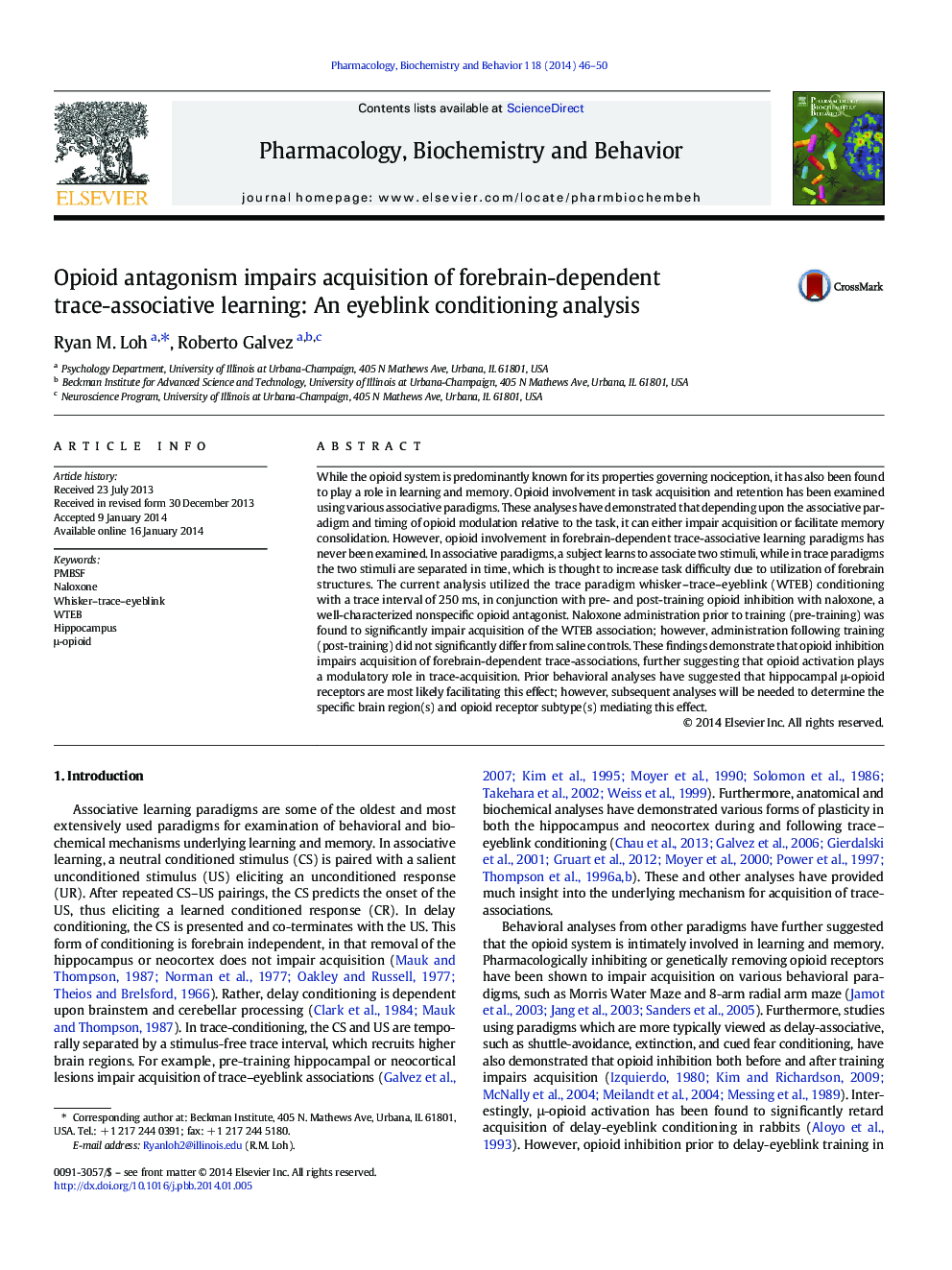| کد مقاله | کد نشریه | سال انتشار | مقاله انگلیسی | نسخه تمام متن |
|---|---|---|---|---|
| 8351343 | 1541866 | 2014 | 5 صفحه PDF | دانلود رایگان |
عنوان انگلیسی مقاله ISI
Opioid antagonism impairs acquisition of forebrain-dependent trace-associative learning: An eyeblink conditioning analysis
ترجمه فارسی عنوان
آنتاگونیسازی اپیویید باعث ایجاد یادگیری ریاضی-وابسته وابسته به ریه می شود: یک تحلیل تهیه ابیبلین
دانلود مقاله + سفارش ترجمه
دانلود مقاله ISI انگلیسی
رایگان برای ایرانیان
موضوعات مرتبط
علوم زیستی و بیوفناوری
بیوشیمی، ژنتیک و زیست شناسی مولکولی
زیست شیمی
چکیده انگلیسی
While the opioid system is predominantly known for its properties governing nociception, it has also been found to play a role in learning and memory. Opioid involvement in task acquisition and retention has been examined using various associative paradigms. These analyses have demonstrated that depending upon the associative paradigm and timing of opioid modulation relative to the task, it can either impair acquisition or facilitate memory consolidation. However, opioid involvement in forebrain-dependent trace-associative learning paradigms has never been examined. In associative paradigms, a subject learns to associate two stimuli, while in trace paradigms the two stimuli are separated in time, which is thought to increase task difficulty due to utilization of forebrain structures. The current analysis utilized the trace paradigm whisker-trace-eyeblink (WTEB) conditioning with a trace interval of 250 ms, in conjunction with pre- and post-training opioid inhibition with naloxone, a well-characterized nonspecific opioid antagonist. Naloxone administration prior to training (pre-training) was found to significantly impair acquisition of the WTEB association; however, administration following training (post-training) did not significantly differ from saline controls. These findings demonstrate that opioid inhibition impairs acquisition of forebrain-dependent trace-associations, further suggesting that opioid activation plays a modulatory role in trace-acquisition. Prior behavioral analyses have suggested that hippocampal μ-opioid receptors are most likely facilitating this effect; however, subsequent analyses will be needed to determine the specific brain region(s) and opioid receptor subtype(s) mediating this effect.
ناشر
Database: Elsevier - ScienceDirect (ساینس دایرکت)
Journal: Pharmacology Biochemistry and Behavior - Volume 118, March 2014, Pages 46-50
Journal: Pharmacology Biochemistry and Behavior - Volume 118, March 2014, Pages 46-50
نویسندگان
Ryan M. Loh, Roberto Galvez,
